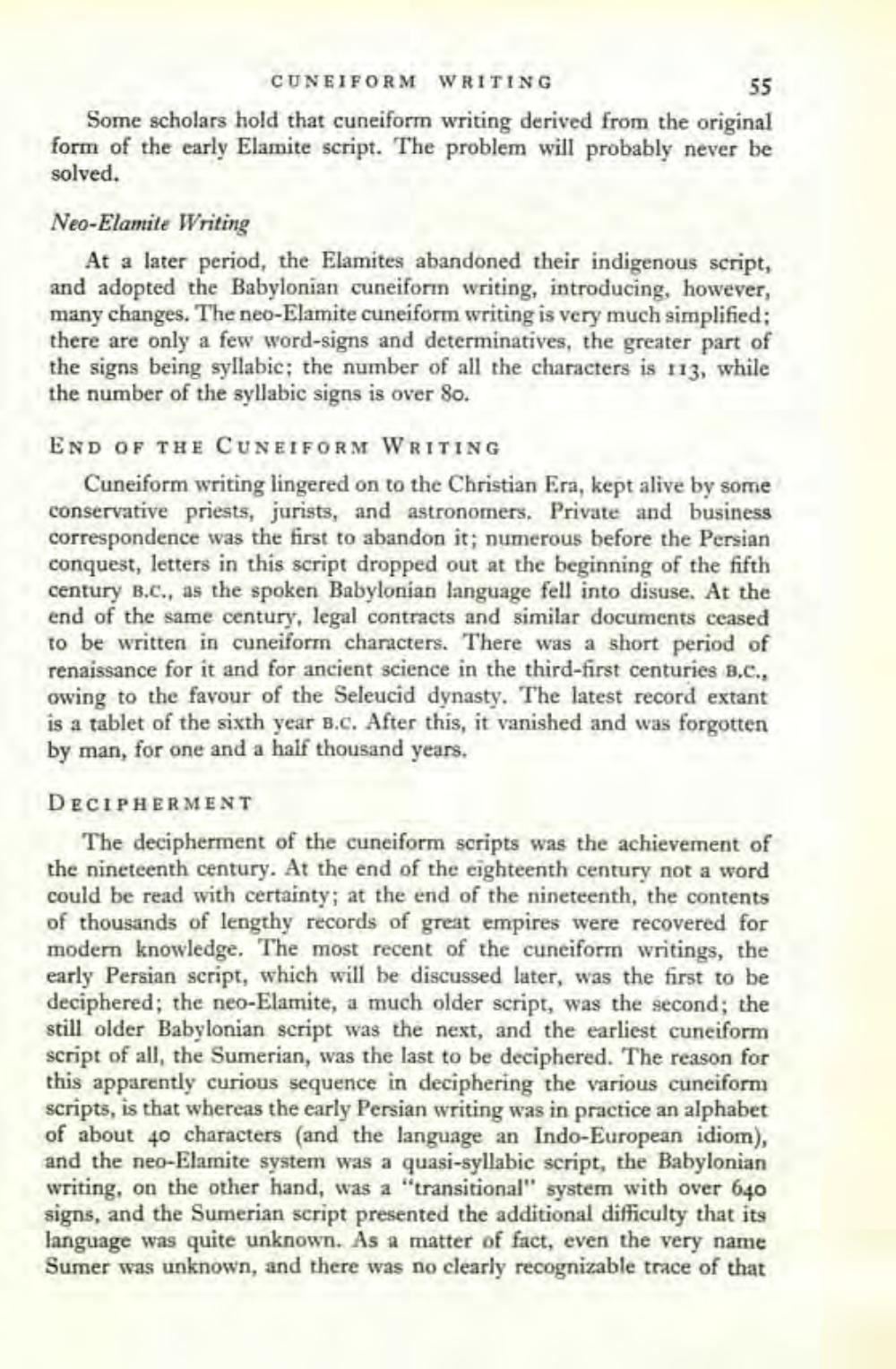________________
55
CUNEIFORM WRITING Some scholars hold that cuneiform writing derived from the original form of the early Elamite script. The problem will probably never be solved.
Neo-Elamite Writing
At a later period, the Elamites abandoned their indigenous script, and adopted the Babylonian cuneiform writing, introducing, however, many changes. The neo-Elamite cuneiform writing is very much simplified: there are only a few word-signs and determinatives, the greater part of the signs being syllabic; the number of all the characters is 113, while the number of the syllabic signs is over 8o.
END OF THE CUNEIFORM WRITING
Cuneiform writing lingered on to the Christian Era, kept alive by some conservative priests, jurists, and astronomers. Private and business correspondence was the first to abandon it; numerous before the Persian conquest, letters in this script dropped out at the beginning of the fifth century B.C., as the spoken Babylonian language fell into disuse. At the end of the same century, legal contracts and similar documents ceased to be written in cuneiform characters. There was a short period of renaissance for it and for ancient science in the third-first centuries B.C., owing to the favour of the Seleucid dynasty. The latest record extant
let of the sixth year B.C. After this, it vanished and was forgotten by man, for one and a half thousand years.
DECIPHERMENT
The decipherment of the cuneiform scripts was the achievement of the nineteenth century. At the end of the eighteenth century not a word could be read with certainty; at the end of the nineteenth, the contents of thousands of lengthy records of great empires were recovered for modern knowledge. The most recent of the cuneiformn writings, the early Persian script, which will be discussed later, was the first to be deciphered; the neo-Elamite, a much older script, was the second; the still older Babylonian script was the next, and the earliest cuneiform script of all, the Sumerian, was the last to be deciphered. The reason for this apparently curious sequence in deciphering the various cunciform scripts, is that whereas the early Persian writing was in practice an alphabet of about 40 characters and the language an Indo-European idiom), and the neo-Elamite system was a quasi-syllabic script, the Babylonian writing, on the other hand, was a "transitional system with over 640 signs, and the Sumerian script presented the additional difficulty that its language was quite unknown. As a matter of fact, even the very name Sumer was unknown, and there was no clearly recognizable trace of that




